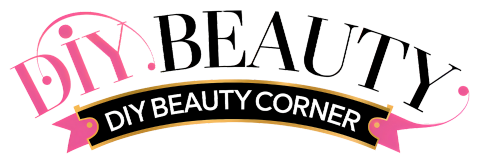
When the weather turns cold, my lips often suffer from dryness and cracking. One effective way to combat this issue is by making a homemade vanilla bean lip balm. This simple yet nourishing recipe combines natural ingredients to create a soothing balm that keeps my lips soft and hydrated.
I find that crafting my own lip balm not only protects my lips but also allows me to customize the scent and flavor. The rich aroma of vanilla bean creates a wonderful experience every time I apply it. In this tutorial, I will guide you through each step of the process, ensuring that you can create your own batch of this luxurious balm.
With just a few easy-to-find ingredients and a little bit of time, you can enjoy the benefits of a high-quality lip balm without the harsh chemicals found in many commercial products. Let’s get started on making your own vanilla bean lip balm!
Gathering the Ingredients
To create a nourishing vanilla bean lip balm, it’s essential to select quality ingredients. Each component plays a vital role in ensuring the balm is effective and safe for my lips. I will focus on important factors when choosing vanilla beans, natural wax, and carrier oils.
Choosing the Right Vanilla Beans
When selecting vanilla beans, I opt for high-quality options to enhance the flavor and aroma of my lip balm. There are various types available, such as Madagascar or Tahitian vanilla. The former is often richer and more robust, while the latter offers floral notes.
I prefer using whole beans or pure vanilla extract for maximum flavor. Whole beans can be sliced open and the seeds scraped for use, while quality extract provides a convenient alternative. Ensuring that the vanilla is organic and free from additives is crucial, as this guarantees that I’m using a natural product in my balm.
Selecting a Natural Wax
Beeswax is my go-to choice for creating a solid base for the lip balm. When selecting beeswax pellets, I ensure they are pure and from a reputable source. This not only guarantees quality but also ensures a smooth consistency in the final product.
I like to buy beeswax pellets because they melt easily, making the preparation process simpler. Other alternatives, such as candelilla or carnauba wax, work as vegan options. These can offer similar binding qualities but may slightly alter the texture. Always do thorough research on the wax type to ensure it aligns with my preferences.
Finding the Perfect Carrier Oils
Carrier oils provide moisture and nourishment to the lips. My favorites include coconut oil and shea butter. Coconut oil is lightweight and absorbs quickly, while shea butter is thicker and offers a rich moisturizing experience.
I also consider using sweet almond oil, which is gentle on the skin and provides added hydration. When sourcing these oils, I choose organic options whenever possible to avoid harsh chemicals. I pay close attention to the smell and texture, ensuring they blend well with the vanilla and create a soothing lip balm that feels good on my lips.
Step-by-Step Creation Process
Creating vanilla bean lip balm involves a straightforward process. I will guide you through prepping your area, combining the ingredients, pouring the mixture, and preparing for packaging. Each step is essential for achieving a smooth and effective lip balm.
Prepping Your Work Area
Before starting, I ensure to gather all necessary supplies. This includes beeswax pellets, coconut oil, shea butter, and vanilla bean extract.
Next, I clear my workspace, making it clean and organized. Having everything within reach simplifies the process and minimizes interruptions.
I also lay out measuring spoons and a heat-safe bowl for melting the ingredients. Using a small pot with water to create a double boiler is ideal. This method prevents direct heat and reduces the risk of burning the mixture.
Additionally, I prepare my containers for the balm. Small tins or lip balm tubes are great options. It’s crucial to have these ready, as the balm will start to set quickly once poured.
Combining Ingredients Correctly
I begin by measuring 1 tablespoon of beeswax pellets, which acts as the primary thickener. Then, I add 1 tablespoon of coconut oil for moisturization. Coconut oil is known for its soothing properties, perfect for dry lips.
Next, I incorporate 1 tablespoon of shea butter. Shea butter adds nourishing qualities and helps combat dryness.
Finally, I add 1 teaspoon of vanilla bean extract for flavor and aroma. The aroma enhances the user experience while keeping it natural.
I combine these ingredients in the heat-safe bowl placed over my double boiler. I stir the mixture continuously as it melts to ensure the ingredients blend smoothly and evenly.
Pouring and Setting the Balm
Once the mixture is fully melted and combined, I remove it from heat. It’s important to work quickly, as the balm can start to set rapidly.
I carefully pour the liquid mixture into my prepared containers. If I’m using a lip balm tube, I make sure to fill it adequately without overflowing. For tins, I simply pour until they’re nearly full.
After pouring, I let the containers sit undisturbed at room temperature. This allows the lip balm to cool and solidify completely. I generally wait about 1-2 hours for it to set properly, ensuring a firm consistency.
Final Touches and Packaging
Once the lip balm is fully set, I check the texture. If it’s too soft, I can remelt it and add a bit more beeswax to thicken it.
After confirming the desired consistency, I put lids on the containers securely.
For an aesthetically pleasing finish, I can label the containers with the date and contents. This is especially helpful if I make various flavors or give them as gifts. It’s important to store the balm in a cool, dry place, ensuring it lasts for several months.


